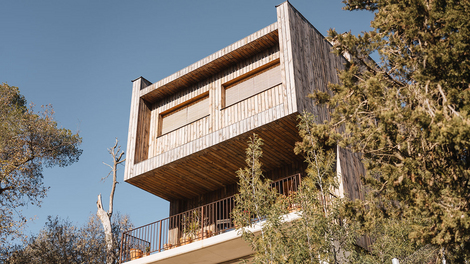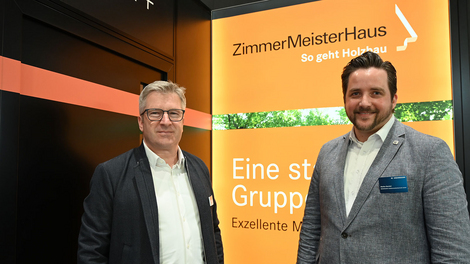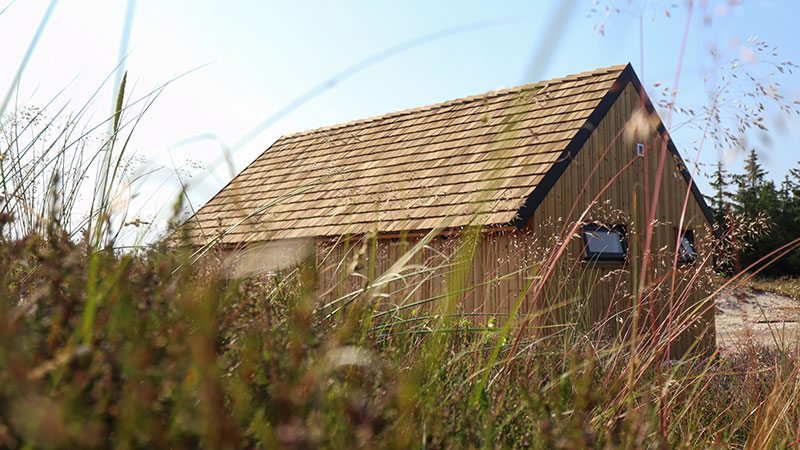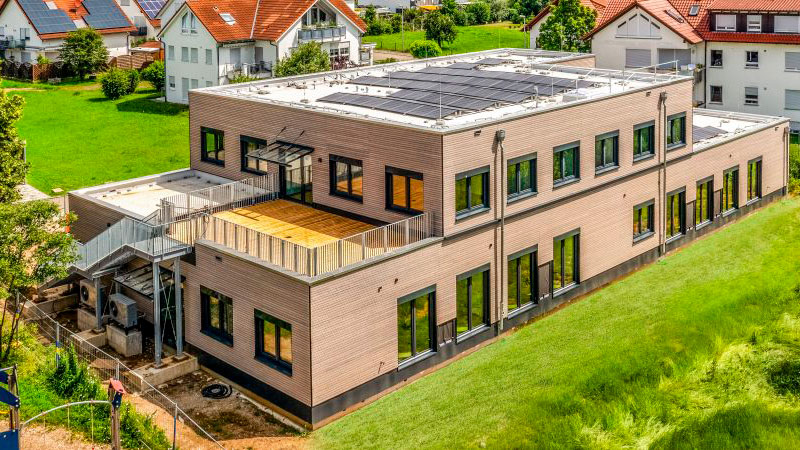Serial renovation presents a major opportunity for timber construction.
Germany has faced a persistent issue for years when it comes to energy-efficient housing: a large proportion of the country's buildings are in urgent need of renovation and contribute significantly to national CO2 emissions. Despite the well-known benefits of energy-efficient renovations—such as reduced energy consumption and lower heating costs—these projects often come with considerable labor and financial demands. The principle of serial renovation presents an opportunity to accelerate the renovation process and sustainably improve the energy performance of existing buildings. In our expert interview with Markus Farnung from the Oikos Group, we discussed the advantages of this approach compared to conventional renovation methods, and how this field can contribute to achieving climate targets.
An interview with Markus Farnung, Head of PMO at Oikos Group.
Mr. Farnung, what exactly is serial renovation, and what role does it currently play in timber construction?
It is now widely recognized that energy-efficient renovations can lead to significant CO2 savings, particularly in older buildings. However, progress on renovation initiatives in Germany remains slow: the current renovation rate is below one percent, while the energy transition would require a rate of up to four percent. The Oikos Group has recognized this challenge and is currently involved in developing a method that aims to renovate aging buildings quickly and at scale using prefabricated timber-frame wall elements produced in the factory. This approach, known as serial renovation, is designed to support a step-by-step increase in the renovation rate. The foundation for this is the internationally recognized Dutch Energiesprong method. It involves constructing an innovative, highly insulated envelope is around the existing building and upgrading it to at least Efficiency House Standard 55 (EH55), with a maximum energy consumption of 55 kWh/m2. Timber construction is particularly well suited to this principle, as wood stores CO2 and offers excellent insulating properties. In addition, timber construction companies have years of experience in serial building, which makes many of their production methods ideal for serial renovation as well.
What are the advantages of serial renovation compared to conventional methods—both economically and environmentally?
The principle of serial renovation offers numerous economic advantages. One of the most important is the increase in renovation speed, which is closely linked to the scalability of the approach when applied to similar types of buildings. Ideally, a pilot project is implemented first, which then serves as a benchmark for similar buildings. This allows for meaningful comparisons and helps to identify clear benefits. Serial renovation also stands out from an environmental perspective. The cradle-to-cradle concept is gaining importance, and serial renovation has the potential to turn buildings into material banks of the future, where resources are stored directly within the structure.
Why has the Oikos Group chosen to specialize in serial renovation, among other areas?
Our factories specialize in the efficient serial manufacturing of customized timber houses. Producing in batch size 1 is also essential when it comes to serial renovation. This gives us an excellent starting position for the efficient production of renovation wall elements.
Which new technologies or materials play a key role in serial renovation?
Digital communication and documentation are crucial during the planning process to keep all team members up to date. At the same time, the choice of materials—particularly for the visible façade—plays a vital role, as it must meet the expectations of various stakeholders. Building owners prioritize low maintenance costs, society expects a high-quality visual appearance, planners aim for simple coordination and compliance with standards, and producers and installation teams require efficient production and assembly processes. Adapting the planning to meet all these requirements is always a challenge—and at the same time, it plays a key role in the success of serial renovation.
What challenges are involved in implementing serial renovation concepts, and how can they be overcome?
There are certainly a number of challenges—but what's interesting is how categorizing them often makes them easier to manage. In projects like these, communication is frequently a key challenge, as many different partners are involved and need to be coordinated effectively. Collaboration tools can offer valuable support in this area. Often, the existing building itself presents a challenge: various measurements and scans must first be taken in order to carry out further analyses. These are often essential for structural calculations and can sometimes delay the overall process.
How is demand for serial renovation evolving, and which building types or regions stand to benefit the most?
In general, interest among property owners and municipalities in launching pilot projects has grown. Many now recognize the benefits and have begun analyzing their building portfolios to identify candidates for serial renovation. Some regions also offer incentives for carbon storage in building materials, which naturally supports the use of timber in serial renovation. The renovation of non-residential buildings, such as schools or daycare centers, is becoming increasingly appealing as well. Serial renovation makes it possible to carry out fast, energy-efficient upgrades during school holidays, minimizing disruption to operations.
Outlook for the future: what is your vision for serial renovation over the next five to ten years? Which innovations or developments will shape the market most?
This question is a bit like looking into a crystal ball. In general, I believe the greatest leverage lies in the planning processes. If these processes are streamlined and a certain level of process reliability is established, serial renovation can become a valuable complement to traditional renovation and help accelerate the energy transition. Especially as pressure for faster implementation increases, serial renovation will likely see growing demand. It’s also encouraging that more and more solution providers are entering this market segment, which is helping to drive innovation. Institutions such as the German Energy Agency (dena) are supporting this transformation and are actively promoting standardization through workshops and other initiatives. I look to the future of serial renovation with confidence and firmly believe that we as timber builders will play one of—if not the—most important roles in shaping this field.






